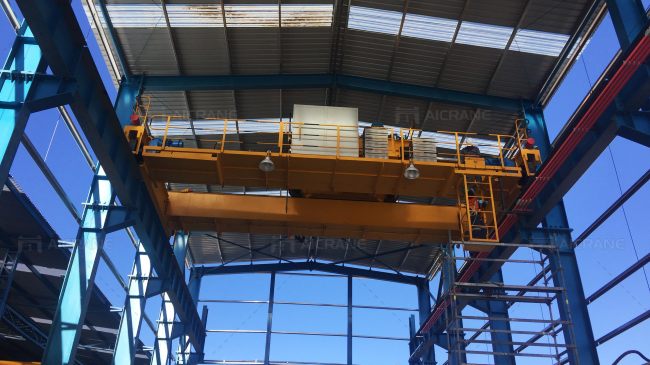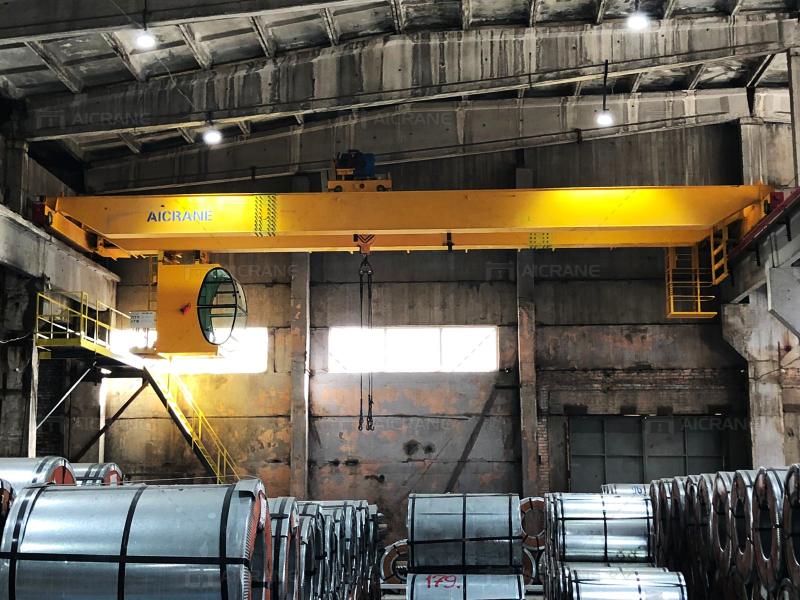Electric Overhead Traveling (EOT) cranes are indispensable in industrial environments, including manufacturing plants, warehouses, and shipping yards. These cranes play a critical role in lifting and transporting heavy loads with precision and reliability. Ensuring the quality of EOT cranes is essential for maintaining operational efficiency, safety, and longevity. This article explores how EOT crane manufacturers uphold quality standards and deliver excellence in their products.

Rigorous Design and Engineering
The foundation of a high-quality EOT crane begins with meticulous design and engineering. Manufacturers invest heavily in research and development to create cranes that meet stringent performance and safety standards.
- Advanced Design Software: Manufacturers use advanced design software and simulation tools to develop overhead crane systems that can handle specific load capacities, operational conditions, and environmental factors. These tools allow engineers to model crane performance, optimize designs, and predict potential issues before physical prototypes are built.
- Engineering Expertise: Experienced engineers apply their knowledge to ensure that each crane design adheres to industry standards and regulations. This includes selecting appropriate materials, designing robust structural components, and incorporating safety features to protect operators and equipment.
High-Quality Materials and Components
The choice of materials and components is crucial for ensuring the durability and reliability of EOT cranes. Manufacturers prioritize high-quality materials and components to enhance the performance and longevity of their cranes.
- Premium Materials: Manufacturers use high-grade steel and alloys for the crane’s structural components, such as the main girder, hoist, and trolley. These materials are chosen for their strength, resistance to wear, and ability to withstand heavy loads and harsh environmental conditions.
- Precision Components: Critical components such as bearings, gears, and motors are sourced from reputable suppliers and subjected to rigorous quality control tests. Precision in these components ensures smooth and reliable crane operation, reducing the likelihood of breakdowns and maintenance issues. Aicrane overhead cranes are manufactured with high quality materials to ensure reliable performance, and you can contact Aicrane group for more crane information and get a reliable solution.

Stringent Quality Control Processes
Quality control is a cornerstone of crane manufacturing. Manufacturers implement rigorous quality control processes at every stage of production to ensure that each crane meets the highest standards.
- In-Process Inspections: Throughout the manufacturing process, quality inspectors conduct in-process inspections to verify that components and assemblies conform to design specifications. These inspections include checking welds, measurements, and the alignment of moving parts.
- Final Testing: Before a crane is delivered to the customer, it undergoes comprehensive final testing. This includes load testing to verify that the crane can handle its rated capacity, as well as functional testing to ensure that all systems operate correctly. Any issues identified during testing are addressed before the crane is dispatched.
Compliance with Industry Standards
EOT crane manufacturers adhere to industry standards and regulations to ensure that their products are safe, reliable, and fit for purpose. Compliance with these standards is essential for maintaining quality and gaining customer trust.
- International Standards: Many manufacturers design their cranes to meet international standards such as ISO (International Organization for Standardization) and IEC (International Electrotechnical Commission). These standards cover various aspects of crane design, performance, and safety, ensuring that cranes are built to global best practices.
- Local Regulations: In addition to international standards, manufacturers comply with local regulations and safety codes. These regulations may vary by region but are essential for ensuring that cranes operate safely and efficiently in different environments. If you want to get cost-effective crane solution, you are suggested to choose a reliable overhead crane supplier.
Advanced Manufacturing Techniques
Modern manufacturing techniques contribute to the precision and quality of EOT cranes. Manufacturers invest in advanced technologies and processes to enhance production efficiency and product quality.
- Computer Numerical Control (CNC) Machining: CNC machining allows for precise cutting, shaping, and drilling of crane components. This technology ensures that parts are manufactured to exact specifications, reducing the risk of errors and improving overall quality.
- Robotic Welding: Robotic welding systems are used to perform consistent and high-quality welds on crane structures. These systems enhance the accuracy of welds, improve the strength of joints, and reduce the potential for defects.
Comprehensive Customer Support and Service
Quality assurance extends beyond the manufacturing process to include post-sale support and service. Manufacturers provide comprehensive support to ensure that EOT cranes continue to operate reliably throughout their lifespan.
- Installation and Commissioning: Manufacturers often offer installation and commissioning services to ensure that cranes are set up correctly and operate as intended. Proper installation is crucial for maximizing crane performance and safety.
- Maintenance and Repairs: Ongoing maintenance and repair services are essential for keeping EOT cranes in optimal condition. Manufacturers provide maintenance guidelines, spare parts, and support to address any issues that may arise during the crane’s operation.
- Training: Many manufacturers offer training programs for crane operators and maintenance personnel. Training ensures that staff are knowledgeable about crane operation, safety procedures, and routine maintenance, contributing to the long-term reliability of the equipment.
Continuous Improvement and Innovation
Quality assurance is a continuous process that involves ongoing improvement and innovation. Manufacturers regularly update their designs and processes to incorporate the latest technological advancements and address emerging industry needs.
- Feedback and Improvement: Manufacturers actively seek feedback from customers to identify areas for improvement. This feedback informs design enhancements and the development of new features that address specific customer needs and industry trends.
- Research and Development: Investment in R&D enables manufacturers to explore new technologies, materials, and manufacturing techniques. Innovations such as advanced control systems, energy-efficient designs, and enhanced safety features contribute to the ongoing evolution of EOT cranes.
Delivering excellence in EOT crane manufacturing requires a commitment to high standards across all aspects of production, from design and materials to quality control and customer support. Manufacturers play a crucial role in ensuring that cranes are reliable, safe, and capable of meeting the demanding requirements of industrial environments. By adhering to rigorous quality standards, employing advanced manufacturing techniques, and providing comprehensive support, manufacturers deliver products that stand the test of time and contribute to the success of their customers’ operations. As the industry continues to evolve, the focus on quality and innovation remains essential for maintaining leadership and excellence in the market.